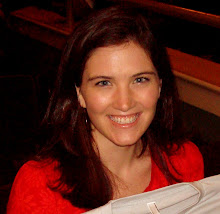One of my other classes this semester is TPTE 517 which deals with trends and issues in education. This week, I reviewed two articles that address the question, “Do computers negatively affect student growth?”. The two opposing articles actually did little to oppose each other. While they both discussed the use of computers and technology in K-12 schools, they focused on two different aspects that were virtually unrelated.
In “The Human Touch”, Lowell Monke passionately asserts his prediction that increased technology in the younger years of education will be the end of all creativity, authenticity, and meaningful experience. He naively claims that youths can learn all computer skills needed in the workplace or college during “one year of instruction during high school” (p. 329). Dr. Monke should try this argument with the thousands of adults who have tried to assimilate to the culture of the technology world without any prior experience. A small fraction, if any, would agree that a one-year (or only a semester, if a school has block scheduling!) course would be able to put them up to speed in the workplace. Technology is complex, and constantly changing, as well as increasing in importance as a medium of our society. In his conclusion, Monke advocates a concentration of “high technology in the upper grades” in order to “honor the natural developmental stages of childhood” (p. 332). This goal is completely defendable. A gradual increase in exposure to technology, just like any other subject in education, makes for a logical progression. Monke sees computers as a threat to creativity and ingenuity, but they can be the exact opposite when used responsibly and correctly. Computers can, and should, function as outlets and encouragements for students’ inner talents and development.
Frederick M. Hess takes his argument in a completely different direction. “Technical Difficulties” focuses on how educators and administrators can more effectively use technology, spending little time on students’ use or non-use. He points out the tendency for schools to use technology frequently, but inefficiently. The main remedy of the article is for teachers to “spend less time on trivia while adding more value” (p. 338). With the use of assessment software to aid in essay-grading and other assignments, educators will be able to “slash the time spent on rote tasks” and redirect their efforts on more important matters (p. 339). Hess views technology as a tool, not a miracle cure, for a problem vaguely stated, but assumed to be inefficient learning in schools.
Taking Sides: Clashing Views in Education is the book that I have cited in this post.

No comments:
Post a Comment